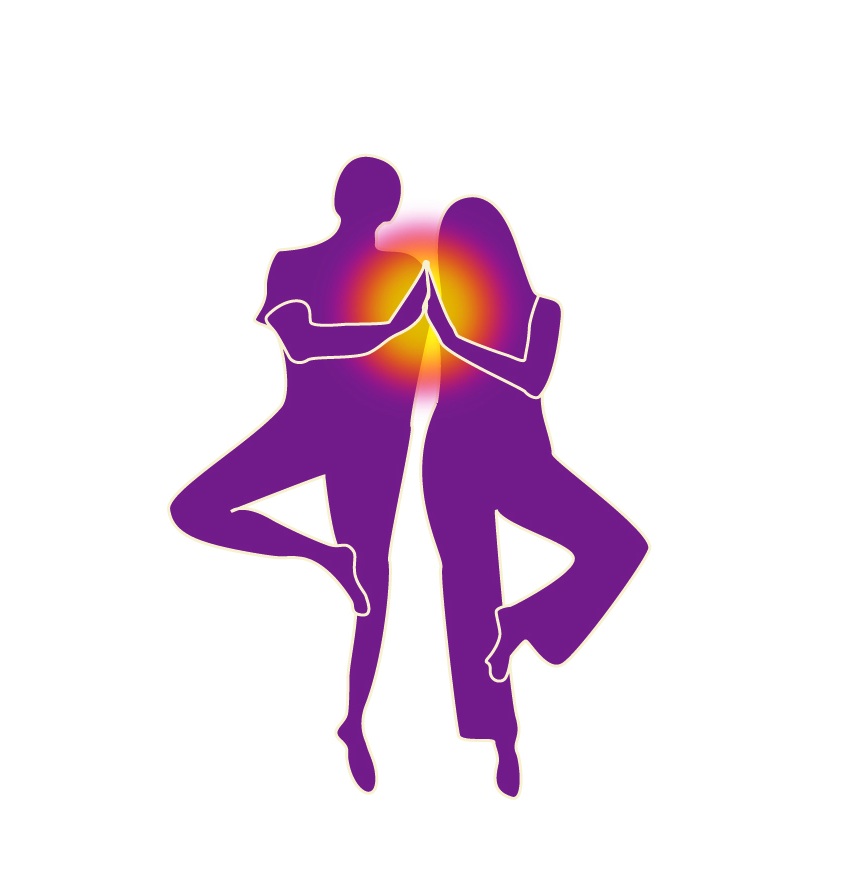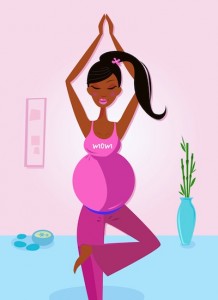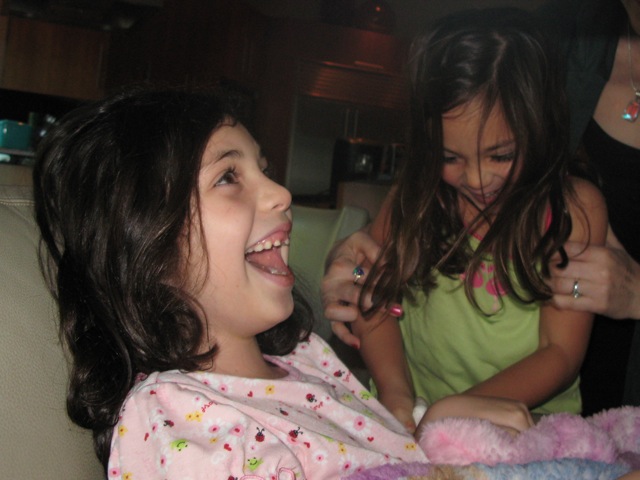by Jasmine | Mar 15, 2015 | Alternative Health, Prenatal Yoga, Yoga Health
The best yoga positions to aid fertility have a few key things in common:
-Increase Circulation to the Reproductive Organs
-Balance Hormones
-Reduce Stress
You made have already heard that inversions like headstand and shoulder stand are powerful natural fertility aids. Those positions didn’t make our list for one simple reason: they should be done with proper supervision. These poses made our list of the five best yoga positions to aid fertility because they don’t need supervision. In fact, they can be done in the safety and privacy of your home with no risk.
Yoga For Reproduction….Flexing, Floating and Baby-making
1. Baddha Konasana – Butterfly
According to B.K.S. Iyengar this pose is a blessing to women. It stimulates the abdominals and ovaries.Sit comfortably on a rug or yoga mat. Draw your heels together in front of your pubic bone, allowing your knees to open outward. *If your knees won’t open fully, this just means your pelvis isn’t open yet. For your comfort, you can sit on a blanket or firm pillow to elevate your hips, this will help.
Close your eyes a moment and tune into your breath. Soften your belly and allow your inhale to fill the space between your belly button and pubic bone, as if you could breathe into your womb. As you exhale draw the belly gently in toward the low back, massaging your internal organs.Press your feet firmly together to allow your inner groins to stretch as you elongate the spine up and out of the hips. Stay here a few breaths.As you breathe, your body will soften into the pose. If you feel you can lean forward without collapsing the lower back, extend forward over your heels reaching up through the crown of the head.Hold onto your feet with your hands, and gently press your knees toward the floor with your elbows. Breathe into the sensation in your hips. Keep your shoulders and face soft.
This pose helps to open the hips and increases circulation in the pelvis, it has been known to help balance irregular menstruation and helps the ovaries to function properly.
2. Upavistha Konasana – Seated Wide Legged Angle Pose
This pose stretches the hamstrings and helps the blood to circulate properly in the pelvic region and keeps it healthy.
Sit on your mat or rug, and open your legs wide. If your legs won’t open fully, this just means your pelvis or hamstrings aren’t open yet. For your comfort, you can sit on a blanket or firm pillow to elevate your hips.
Flex your feet back toward your face and make sure your feet are straight up and down, perpendicular to the floor. Lift up through your heart and extend your spine on an inhale. With a long spine, slowly walk your hands forward until you feel the first sensation in your groins and hamstrings. Stop here and breathe. Inhaling as if you could breathe into your womb, allowing the belly to soften and swell then exhale drawing your belly in. When you feel the body has opened, walk your fingers forward until your next edge of sensation. Stop and breathe, and then continue. Once you are fully extended , you can slowly rise, lead with the heart and gently shake out your legs.
This pose is beneficial because it helps regulate menstrual flow and also nourishes the ovaries. One of the wonderful benefits of Yoga is it teaches you to respect your process. Treat yourself gently as you approach these poses, knowing that mastery doesn’t occur overnight. Treat yourself just as gently as you proceed on your path toward parenthood. Accept and honor your limitations and don’t push past the point to where you are in pain or massive discomfort.
3. Viparita Karani – Legs Up The Wall
This pose is restorative and helps to calm the nervous system and the heart rate. It is powerful for women because of its inversion qualities and ability to focus on the reproductive organs.
Find space at a wall. You can use a blanket underneath your hips if you want. Lay on the floor and scoot your bottom as youwalk your legs up the wall until your hips are level and your back is on the floor. Put one hand on your belly and one hand on your heart or the arms can lay open, creating space in the heart. This pose is about receiving and surrendering. Let your breath be soft and deep, allow your mind to quiet and surrender to the pose. You will feel the circulation in your body shift. Imagine a waterfall starting at your legs, pooling at the hips and slowly spilling down into the heart and the brain. This visual will follow the natural flow of energy as it cultivates a calm nervous system. This pose can be done while you’re menstruating as long as the hips are level. This pose has great healing qualities and is a gem for women. It is a great pose for insomnia, anxiety and jet lag as well.
What are your thought about yoga poses for fertility? Which ones do you think are the best and worst?
by Jasmine | Aug 20, 2014 | Prenatal Yoga, Yoga Health
 Belly Pilates, a motherhood fitness and maternal fitness and wellness studio, comprehensively serving the health, wellness and educational needs of the multiple stages of motherhood, is excited to present FREE and low-cost Instructional pregnancy yoga and pilates classes in Philadelphia for parents throughout the Philadelphia and Main Line area.
Belly Pilates, a motherhood fitness and maternal fitness and wellness studio, comprehensively serving the health, wellness and educational needs of the multiple stages of motherhood, is excited to present FREE and low-cost Instructional pregnancy yoga and pilates classes in Philadelphia for parents throughout the Philadelphia and Main Line area.
Workshop topics include: Partner Massage for Labor, Breastfeeding 101, Baby Development & Milestones, Baby Sleep Solutions by Baby Sleep Expert, Jennifer Schindele, Baby-wearing 101, Benefits of Doulas, Infant Massaging, and much more.
Pregnancy Yoga Classes in Philadelphia? Free Workshops
Kelly McBride, owner of Belly Pilates, Birth Doula, Childbirth Educator, and the tri-states’ only certified Master Instructor of Prenatal and Postpartum Pilates, comments, “The inspiration for creating a lengthy series of free workshops came from a real passion to provide specialized, expert information for a growing number of moms interested in taking a more natural approach to leading a healthier lifestyle for themselves and for their families. I’m so pleased to see how many ‘mompreneurs’ rallied behind me to offer such a well rounded line up! Not only do I welcome moms to explore the holistic services to be presented in many of these workshops, at no cost, but I encourage all parents to take advantage of this coming fall’s series!”
For more information about the Free Instructional Workshops to be presented at Belly Pilates, visit: www.bellypilates.com. Pre-Registration is required.
Clients also benefit from the community of wellness partners and key resources McBride has established over the years. It is McBride’s goal to continue to expand and grow this community to better serve the needs of moms. A list of these partners and resources can be found on the Belly Pilates website at: www.bellypilates.com or contact Kelly McBride at 610.608.5883.
by Jasmine | May 9, 2014 | Iyengar Yoga, Yoga For Weight Loss, Yoga Health, Yoga Teacher training
I’ve been doing yoga for over 15 years but I only recently discovered Iyengar yoga. After getting familiar with William Broad’s, Science of Yoga book and hearing all the ire it got for it’s chapter about injuries I wanted to learn more about this not-very well known kind of yoga. Many yoga teacher training programs do not have rigorous standards for anatomy or bio-mechanics or how to work with students that have injuries or other limiting conditions. I often did quite a bit of research on my own on how to address working with students safely.
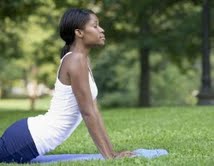
Iyengar Yoga Poses and Classes in Philadelphia and on the Main Line
Iyengar teachers have the most rigorous standards in order to pass their certification. In order to become an Iyengar teacher, you have to be practicing Iyengar yoga for at least 3 years which means you should be attending at least 3 classes as well as have your own home practice. There are also over 5 levels of teacher training which range from introductory knowledge to Senior teacher. There are also exams and theory papers that are due at each level. Just signing up for an Iyengar training is no guarantee that you will become one. You can expect rigorous tests on poses, anatomy and other tenets about yoga philosophy.
What can you expect from an Iyengar yoga class? What are the poses like?
Going to an Iyengar class is unlike the flow-iness that you find in a typical hatha or vinyasa class. I have only been to two studios here in the Philadelphia area but both of them are rather austere. There is no music, no aromatherapy and no candles. The teachers will want to know about what physical limitations or injuries you have. Do you have a herniated disc, torn rotator cuff or arthritis in your knee? Are you scared that going to a typical yoga class will be painful or you’ll hurt yourself more? If yes, get your bum body to an Iyengar class. The teachers will work with you on a fairly customized level ( depending on how many people show up in the class)
Because most Iyengar classes assume a certain amount of knowledge about the poses and yoga in general it is not a great option if you are a brand new beginner. They will often say the names of the Iyengar poses in Sanskrit. They also assume you have a certain level of bodily awareness and propioception which most beginner yoga students don’t have . If you are a yoga beginner, you would either want to talk to the teacher first or attend a more basic yoga introduction course. Avoid going to an advanced, power yoga , hot yoga, or “all-levels class” since you will feel intimidated and overwhelmed with the poses there.
You often spend a long time dissecting and breaking down a pose. First you might see the teacher model the pose first, then instruct you how to get in it with some very technical anatomy cues to pay attention to in your own body. After being in the pose, the teacher might model it again or have another student go into and point out certain ways the student is holding their body in the pose. Often you will go into the pose again with these further anatomical refinements. Since the poses requires a lot of props, you spend some time getting and putting away props as well as building your pose with the props.
One of the teachers I go to is Donna Debs who has a home studio out in the Philadelphia Suburbs on the Main Line. Her home studio is on a beautiful private street and the studio itself is clean with all of the requisite props required for an Iyengar practice such as blocks, chair, wall-straps, bolster, blankets and eye pillows. I’m not sure how old she is but I suspect she is about my mom’s age with Jennifer Aniston’s toned, cut and sleek body. ( One thing about Iyengar teachers, they have the most defined, toned muscles which shows how much they are fully and completely engaging their body to do their practice) Donna teaches about 5 classes a week, a few in the morning and a few in the evenings but no weekend classes. Donna also cuts back on classes from the end of November and starts up again in January and there are no classes during the summer.
The other Iyengar teacher I take classes with is Robin Lowry who has a home studio in Germantown. Robin is a full-time high school teacher so only teaches about two classes a week in the evenings so it’s been tough for me to be able to attend her classes. Her studio is in an older style Philadelphia twin on the 3rd floor My only complaint about Robin is that I wish she had more classes or maybe a Saturday class .Robin only teaches classes during the regular school year and not on Mondays when there are school holidays. There is no AC in the studio which is why there are no classes from the end of May to the end of September.
by Jasmine | Apr 1, 2014 | Acupuncture, Thai Massage, Yoga Health
Just wanted to touch base and send a message about what’s going on yoga-wise with us. Between teaching couples yoga in Manayunk and Gentle yoga in Mt Airy, I’ve also been visiting plenty of local yoga studios (as a student). It’s refreshing to be the student sometimes…. it’s nice to have someone tell you what to do in class instead of directing everyone else………
I’ve attended Aerial Yoga at Fishtown’s Amrita’s Yoga… the most stunning yoga studio you will ever visit…. (and I’ve been to hundreds)….. feels like the Four Seasons designed that space.
Also went to Katrin Elia Yoga on the Main Line a few weeks ago….. Restorative yoga plus Marma point therapy…. heavenly.
Purenergy yoga in Paoli just opened up…. their Aerial classes are also high on my “to visit ” list.
The yoga I am most excited about this Spring is Namas Day though.
Namas Day is the creation of Philly Area Yoga, Philadelphia’s premiere online yoga and wellness resource.
The festival is another way that we strive to bring together the yoga community and share the incredible local talent.
They represent the community as a whole and are not affiliated with any studio or organization – they are independent and inclusive of everyone, every studio, every teacher, and every style, whether you want to jump around and sweat in a sweaty vinyasa workshop or want to be gentle and restorative in a yin class or Thai Massage.
This year’s event will involve a full day yoga workshops and master classes delivered by local instructors and wellness professionals.
It’s taking place at:
WHYY Building
Independence Mall West
150 N. Sixth Street
These are the workshops I plan to take… never seen acupuncture combined with poses before. I’ve taken Shawn Declue’s Thai Massage workshop before so I know this will be delicious. Never taken a goal setting workshop at a yoga event so that should make it a more transformational event.
Smart Goal Setting 101 led by Brittany Wallrath
Thai Yoga Massage led by Shawn Declue
Finding the Yin Within: A Yin Yoga and Acupuncture Experience led by Alice Dommert, Christopher Coan, and David Schiman
WHYY Building
Independence Mall West
150 N. Sixth Street
Saturday May 10th
8:30am – 6:00pm
Check-in opens at 8:00am…..
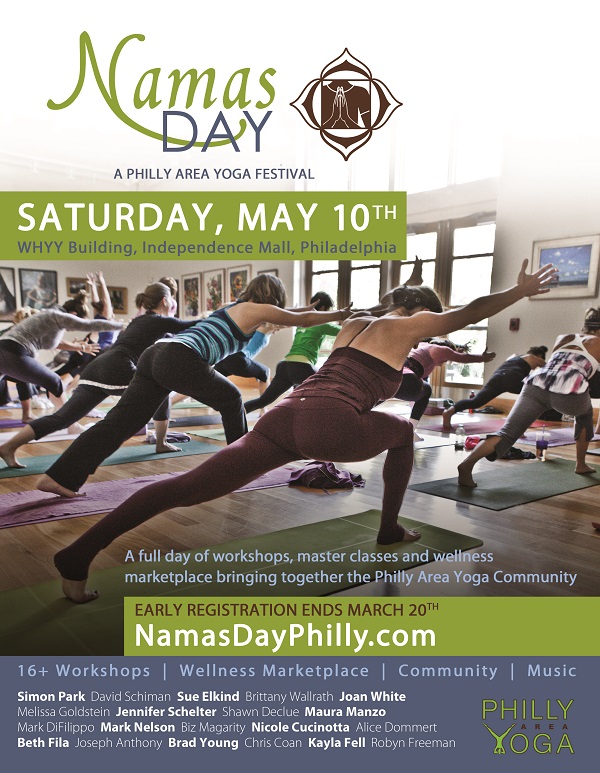
by Jasmine | Jan 21, 2014 | Yoga Health, Yoga Teacher training
Yoga, an ancient practice that focuses on channeling good energy to different parts of the body by engaging in various poses, has become more and more popular over the years. The number of people who take part in this kind of workout routine has increased steadily over the years.
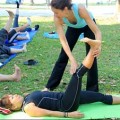
Common Injuries in Yoga and How to Avoid Them
Unfortunately, so does the number of people who suffer injuries from this kind of exercise. If you are not careful, transitioning between different yoga poses will take a toll on your body.
For this reason, you should see to it that you know everything about yoga practice and safety before you personally try out this workout routine. Here are some of the most common injuries that people experience when they do yoga, along with helpful tips as to how you can avoid them. Peruse through them and see to it that you keep yourself protected from these injuries when you do your poses.
Separation of Lower Back Ligaments
This kind of yoga injury is common among those who practice yoga, especially among those who try out complicated poses that are well beyond their level of expertise. Most of the time, injury that involves misalignment of lower back ligaments and of the SI join is experienced by those who try to straighten their legs without releasing the pressure on their hamstrings.
One surefire way to avoid this injury is to ensure that the different muscles in your legs are softened and relaxed prior to attempting a straight-leg pose. A couple of breaths in and out and a clear mind will give you the relaxation that you need to achieve the pose without hurting yourself. If you find that the pose is simply too hard for you, then you may cheat by bending your knees a little. Also avoid digging your hills too much into your yoga mat to avoid unnecessary pain.
Shoulder Pain and Strain
Those who focus on their arms and upper body by performing arm balance poses are prone to experiencing shoulder injuries. This kind of injury often results from uneven pressure all over the body. While it may seem that this kind of pose requires focus on the arms and shoulders, it is anything but that. Yogis who think this way will surely experience pain on their upper parts.
To avoid this injury, make sure that you observe and maintain proper body alignment as you do your poses. Also make sure that you use your back and your thighs to hold your pose. This way, you will be able to ensure that your shoulders and arms are not the only parts that are experiencing the pressure.
Twisting of Inter-Coastal Muscles
Yoga practitioners are prone to tearing their inter-coastal muscles, which are the muscles that are located between the ribs. Usually, this kind of injury is sustained from twisting poses. Those who suffer from this kind of injury are usually those who try to do their twists without maintaining the right posture.
To avoid this king of injury, see to it that you maintain the right and the best-aligned posture as you twist your body in both directions. See to it that you also do not overexert yourself and only twist your body as far as you can, to avoid exerting unnecessary pressure on your rib muscles.
by Jasmine | Nov 28, 2013 | Yoga Health
Yoga has many benefits to kids on physical, social and emotional levels. Yoga for adults tends to be a very solitary activity even if it is done in a classroom with other students it is very internally focused. In a kids yoga class, they tend to be very focused on the group and many of the activities require paying attention to the interactions and dynamics of the group such as singing, dancing, discussion, games, partner and group poses.
The class is much more externally focused for a portion of a time. Many of the activities encourage cooperation and teamwork such as when they are doing a partner pose where one person is balancing on the other. There are usually ice-breakers as well in the beginning of class where kids introduce themselves and get to know the other kids such as throwing a ball to another child and then they say their name. These warm-ups are more essential since kids will have a higher amount of anxiety around people they don’t know.
On an emotional level, the poses help to develop concentration, empathy, focus, confidence, self-esteem, respect for others, improved attitude, more positive outlook. This will often help them achieve better results with their schoolwork and have better relations with their family members, friends and classmates. It equips them with skills to be able to manage their stress more effectively. It can help with many behavioral issues as well since they learn how to manage their emotions more effectively. On a spiritual level, they help to develop compassion, awareness and a sense of purpose as well.
What are some ways to teach breath awareness, meditation, visualization, yogic concepts to kids?
One fun way to teach the importance of oxygen is to light a candle and then put it inside a glass. When the candle goes out, you can initiate a discussion of why it went out and then use this example of how we need oxygen for our bodies to light us up and give us energy. This is a great activity to do when the kids are rambunctious and you want to focus them and settle them down. Some great breathing exercises are bumble bee breath. You have the child close their eyes and plug their ears and then make a Hmmmmmmmm sound. After you ask them what their experience was like. This helps them to inwardly focus. You can also have them block their ears and eyes and have them do this with an ocean breath sound as well. Have them imagine the waves coming in from the ocean up to the shore. It is very focusing, grounding and helps them to concentrate. You could also have them hiss like a snake while on their bellies. They should repeat about 3-5 times very slowly and then check in and see how they feel afterwards.
A nice group-breath activity would be to have all of them join their hands in a circle and then they come in with a breath together and raise their hands and then exhale and back out of the circle with their arms coming down. This helps to build community and cooperation and can be a centering exercise.
A nice way to incorporate breath work with confidence building activities is to have them inhale in a positive affirmation such as, “ I am strong” and then they can exhale out a different affirmation such as, “ I am beautiful”.
An effective way to teach yoga lifestyle concepts to kids is by having a discussion first about topics such as non-violence but to use kid-friendly language by using a simpler word such as, “peace”. You then talk about examples of peace such as when your brother or sister is being mean to you, you can send them thoughts of peace instead of just thinking negative thoughts. Let the child experience what happens when they do this. Ask for examples of other ways they can show peace. When you are in a pose later in class that is quite meditative you can remind them that this is practicing peace as well since you are feeling calm when you are doing it.
A fun way to teach visualization and meditation to kids is with, ”Imagination Vacations”. You can lead them through some very simple guided imagery (the younger the child, the simpler the imagery should be) such as a being in outer space, in the ocean, on the beach, playing in a garden. After this you can tie it together by having them draw a picture of what they saw. They can focus on their picture whenever they want a special place to return to.
What are some tie-ins for kids?
A tie-in is a way to bring yogic concepts from class into their every day life at home or in the classroom, which helps kids to internalize the lessons. There are stories and books that you can use as a basis for discussion at the end of class. One example would be the candle in the glass that extinguishes which I discussed above. Another good one is by using three yoga blocks to represent the breath, mind and body. You can pile the blocks on top of each other and show how they are all connected. Have one of the kids remove a block and show how they seem to fall apart when they are not working together or connected.
Another example is having the kids draw with crayons after they had their visualization. For older kids and pre-teens you could have them journal things such as, “What do I like about myself?” or “Write Yourself a Thank You Note.”
What are specific activities or behaviors in a yoga class that can build self-esteem?
Using affirmations when in a pose is a great way to build self-esteem. When you are in a very strengthening and challenging pose such as Warrior, you could have everyone yell, “ I am strong ( or proud)”.
You could also have songs that have positive affirmations as well, such as the I Grow With Yoga song that has verses such as, I grow strong like a mountain or I see the universe in you… the beauty in your heart shines through.
For the visualizations, you could have them imagine goals they are achieving such as being able to focus better in school so they can get better grades, improved behaviors such as getting along better with their siblings or parents. Use simple kid-friendly language so that it is memorable and has lots of colorful imagery in there.
You can have them create art projects that affirm positive things such as a Gratitude Tree or Me Tree (things they like about themselves). You could either have one big tree and everyone hangs something on it or kids could draw their own tree which they could then take home.
For free articles about yoga mailed once a month, email info at synergybyjasmine dot com with “Request Yoga Tips” in headline.
